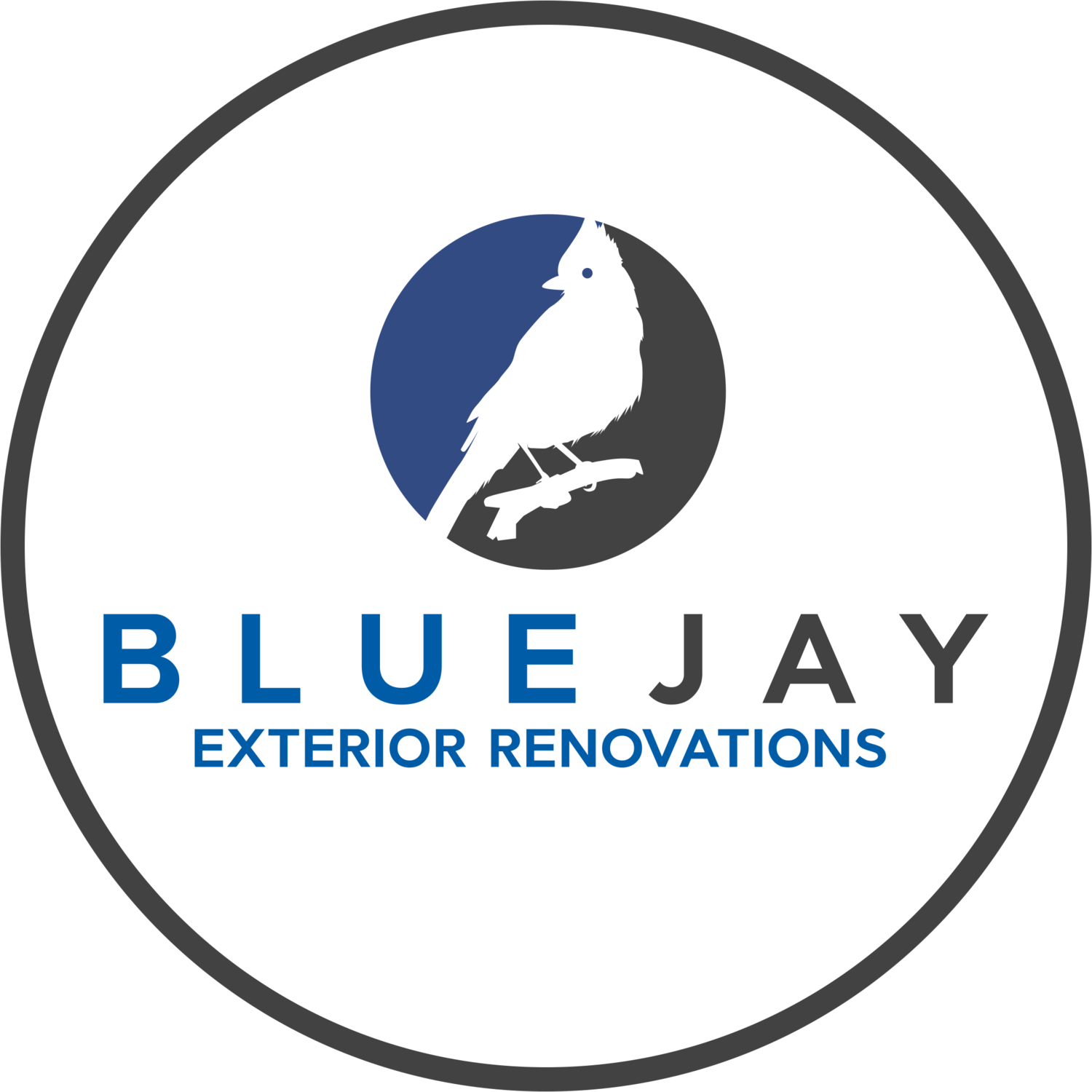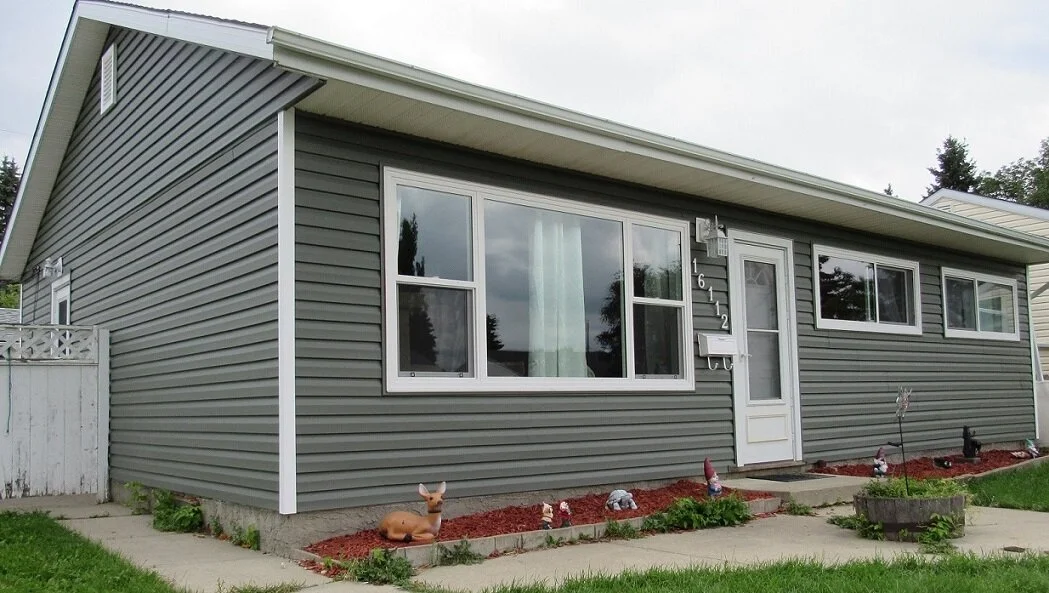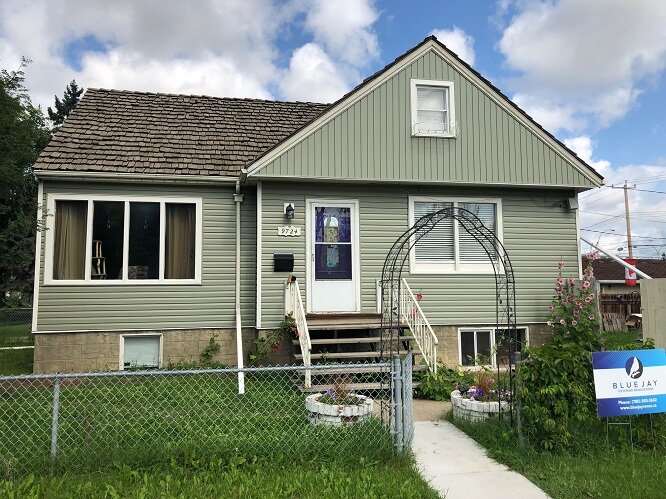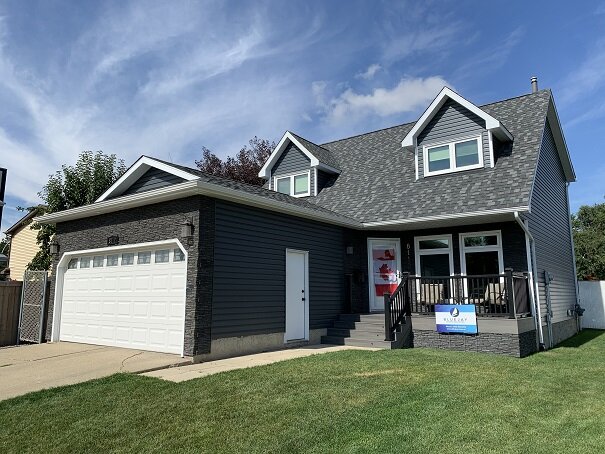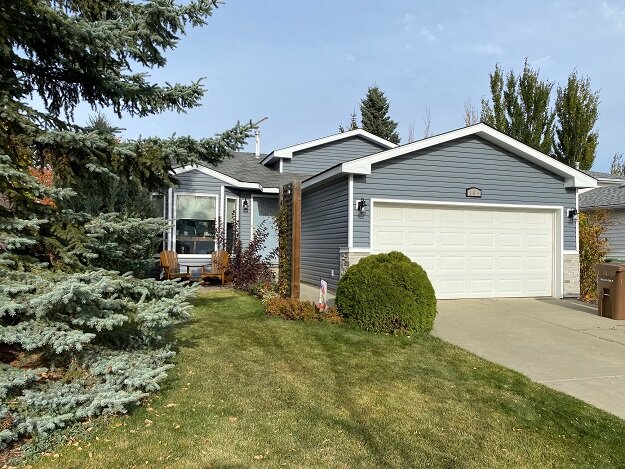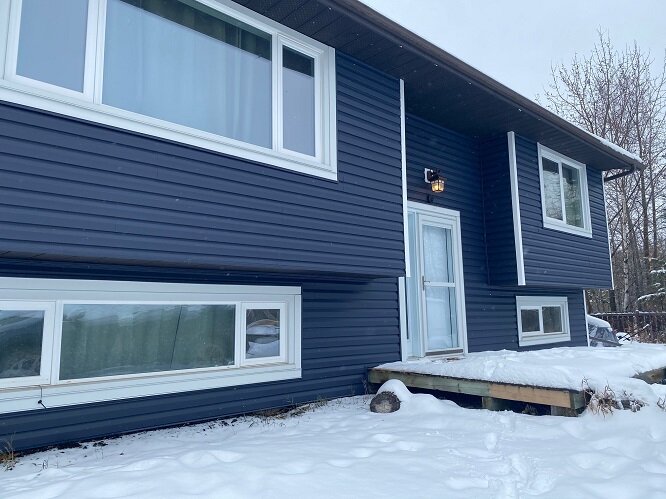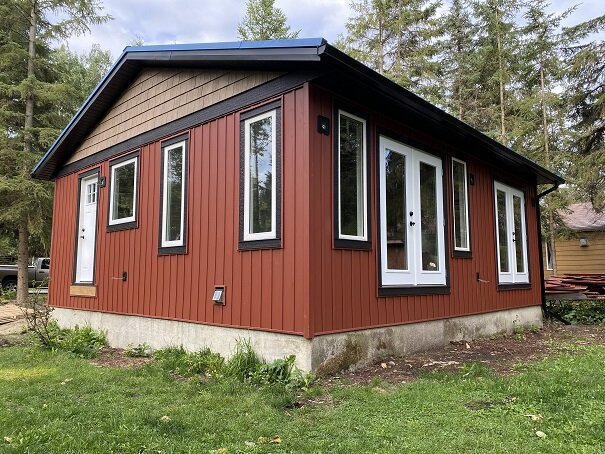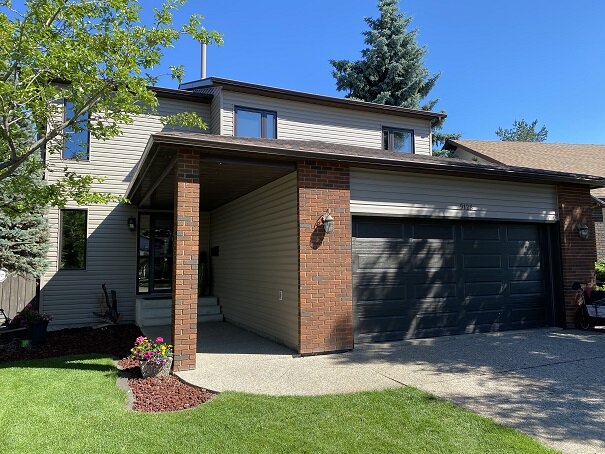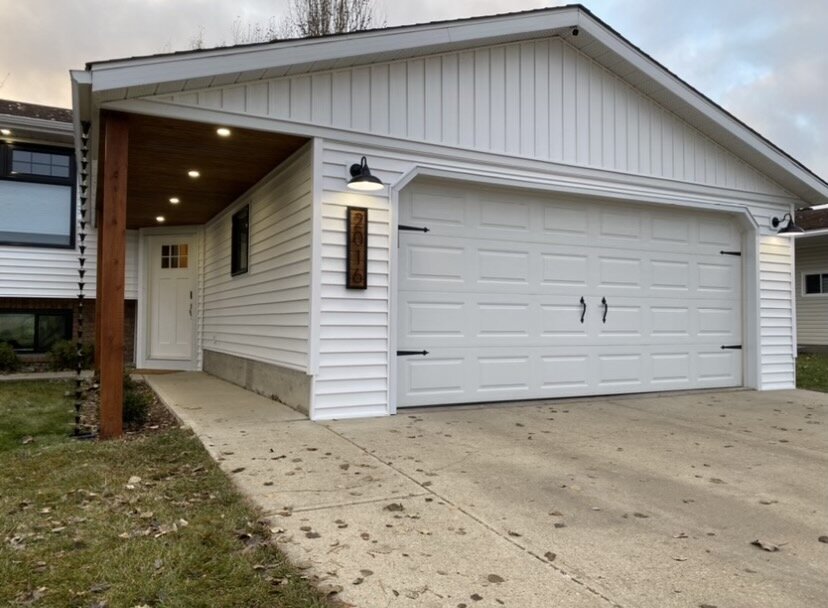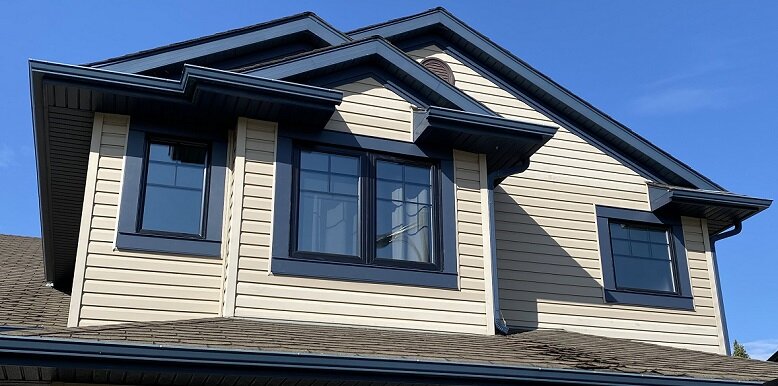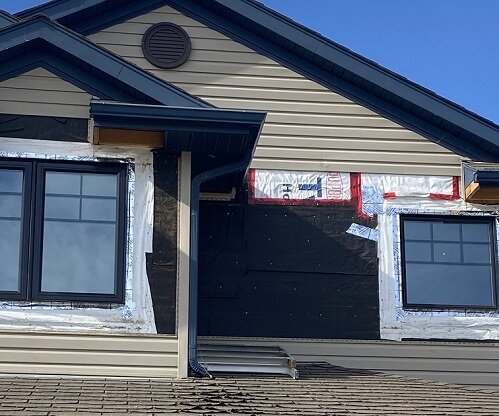It’s no secret that vinyl siding is the most popular exterior cladding choice in Edmonton, and it has been for at least the last 25 years. Despite the product’s popularity, it sometimes suffers from a poor reputation. This article will show you the pros and cons of vinyl siding relative to other products, and why we feel that Edmonton’s homeowners should still feel confident in the material!
Pro: Price point
The first thing you probably learned when you started your research is that vinyl is the most economical siding option. Panels are made from thin sheets of PVC that lock together, which means that you get a ton of wall coverage for not very much money. And because the panels weigh relatively little, installation is faster than any other siding product.
On average, you can expect a vinyl renovation to come in between 25% to 50% less expensive than a fiber cement or wood siding project, depending on the design of the home.
Pro: Colour options
No matter which way you look at it, there are tons of colour options if you go with vinyl siding. We’ve installed various shades of red, green, gray, and blue, as well as the more neutral shades of white, taupe, and brown that you might be more used to seeing.
Check out the gallery below to see just a few of the many colours that we’ve installed over the years:
And if one manufacturer’s colour palette doesn’t quite do it for you, that’s ok! Our preferred vinyl manufacturer is Royal Building Products, but we also recommend Mitten Siding as an alternative for our customers who need more options. Depending on where you are, there are probably a few different suppliers that you could choose from!
Con: Fading
Does vinyl siding fade?
Yes, you can expect vinyl siding to fade when it’s installed on the exterior of your home. How much it will fade will depend on two factors:
Colour: In general, darker colours will fade more than lighter ones.
Exposure: The biggest environmental factor affecting fading is exposure to sunlight. (Since Edmonton is so far north, we don’t see nearly as much direct sunlight throughout the year as they do in some American cities.)
To give you an idea of how much you can expect vinyl siding to fade in Edmonton, take a look at this partial siding project we completed in 2020:
The customer asked us to replace their wood backed aluminum window trims with HardieTrim boards with correct flashing details. As a part of this project, we had to replace several pieces of the existing siding, which was originally installed in 2005. As you can see, the original material has faded somewhat, but it’s probably not as noticeable as you would expect!
(In case you are wondering, both the new and original siding on this home are Mitten Oregon Pride Siding in Brownstone)
Con: Difficult (impossible?) to paint
Once your vinyl siding is starting to look a little bit faded, you will most likely be looking at a full replacement. There are companies out there that will offer to paint your vinyl for you, but it isn’t as simple as painting wood or fiber-cement siding.
First of all, both the paint and labour will be more expensive than a traditional paint project. Repainting vinyl siding is also a bit of a risk: we’ve seen painted vinyl warp (because the paint can absorb heat), buckle (because excess paint buildup doesn’t let the panels move freely), and peel (because the paint didn’t adhere properly to the PVC substrate).
Did we mention that vinyl siding needs to move freely? That’s because throughout the year, it will grow and shrink with as the temperature changes. In the cold winter months, a 12-foot panel of vinyl siding will can shrink by more than ½”. Since exterior paint must be applied in the warm summer months, this means that your siding’s beautiful new coat of paint is likely to have weird vertical stripes at the seams every winter when it shrinks.
If you are thinking of hiring a contractor to paint your vinyl siding, it’s a good idea to go check out some of their previous work in the winter months (when vinyl siding shrinks the most).
So, can you paint vinyl siding? There are paints that will work, but we just don’t think it’s a good idea in colder climates.
Pro: Water resistance
Since vinyl siding is made from plastic, the material itself is pretty much waterproof. You can put it closer to grade than other products without having to worry about swelling or paint loss. Some products, such as wood and fiber-cement siding, require more care to ensure that they are kept clear of standing and running water.
Because vinyl siding is so water resistant, it is also more DIY friendly than some of the other options on the market.
Con and Pro: Moisture management
When we talk about moisture management, we are referring to vinyl siding’s ability to keep water from getting into the walls that it is supposed to protect.
The downside here is that when vinyl siding is installed it is anything but watertight on the wall. Because the siding panels are designed to tuck into open pocket trims, any wind-driven rain will get behind the panels and onto the face of the house wrap. That’s why a proper envelope installation is so important underneath vinyl siding! If your installer messes up the flashing details, your walls will surely get wet.
Luckily, as easy as it is for water to get behind vinyl, it’s even easier for it to escape! Since vinyl siding is so light and open, moisture that runs onto properly installed house wrap will simply drip out at the nearest drip flashing. And since the material allows so much air movement behind it, even when the house wrap isn’t installed perfectly rot damage is unlikely.
The vinyl siding corner allowed water to pour onto this poorly installed tarpaper for 28 years. As bad as this looks, the plywood was just stained. It was completely dry, and still solid.
In Edmonton, our climate is dry enough that wet walls behind vinyl siding are usually able to dry out completely, which limits the damage. We rarely have to complete significant repairs to the structure underneath old vinyl siding.
Pro: Low maintenance
As homeowners, we already have enough to keep up with around the house. Cleaning, dusting, shoveling, mowing, painting, staining, and on and on it goes. The last thing most people want to do is to add another maintenance item to their list by choosing an exterior cladding product that needs a ton of upkeep.
Maintenance factor is another area where vinyl siding shines. Made from a specialized type of exterior grade plastic, it requires next to nothing from the homeowner to continue looking its best for decades. All you really have to do is to rinse it down once in a while, and that’s about it! There’s nothing to repaint and no caulked joints to keep an eye on.
Con: Breakage
One of the main drawbacks of vinyl siding is that it is more breakable than other materials. Over time, the elements will take their toll. Wind, rain, sun, and freeze to thaw cycles all have their part to play. At the 25 to 30-year mark, vinyl siding will start to become more brittle. This means that an off-target football might crack a panel instead of bouncing right off. A heavy wind might be enough to break several panels off the wall, as the nailing hems just aren’t as strong as they used to be.
In hail storms, even brand-new vinyl is often shredded by the falling ice while fiber cement siding will come through mostly unscathed (take a look at this case study to see the difference). You might be thinking that hail damage isn’t a concern, because your insurance company will pay for new siding. This is true, but as the years go by (and the claims keep piling up) insurance companies are doing whatever they can to limit their exposure.
Over the past 5 years, we’ve seen insurance companies increase deductibles and start applying depreciation to siding replacements in southern Alberta. This makes sense, as hail damage has been a killer to insurance companies’ profit margin for some time. Don’t be surprised if vinyl siding is completely excluded from some insurance policies 10 to 20 years from now!
Con: Heat Resistance
Unfortunately, vinyl siding will warp or melt when exposed to even moderate heat. If you keep your barbeque too close to your wall, you can pretty much guarantee that you’ll be replacing panels. Even the reflection from your neighbour’s windows might be enough to ruin vinyl siding!
This picture shows damage caused by having a barbeque placed too close to a vinyl siding wall.
Pro: Simple to repair
While it’s true that vinyl is more breakable than some other materials, it’s also one of the easiest to repair!
To repair a broken piece, an installer will use a special tool to unlock the broken panel from the others. The new piece of siding can then be attached to the wall, and the original piece above can be locked to the new one. (Broken corners and J-trims can be replaced fairly easily as well, but these repairs will take a little bit more time.)
The verdict
Vinyl siding really started to take over the Edmonton market from aluminum and wood siding in the late 80s and early 90s. Homeowners were drawn to the fact that it delivered an extremely low maintenance exterior at a more budget friendly price point.
When going through this list of pros and cons, it becomes pretty clear why vinyl siding remains the most popular siding option in Edmonton to this day. Since we have lower sunlight exposure and lower risk of severe hailstorms, it’s a great fit for our communities.
In the end, only you can decide if vinyl siding is the right product for your home. Hopefully this article has helped to point you in the right direction!
